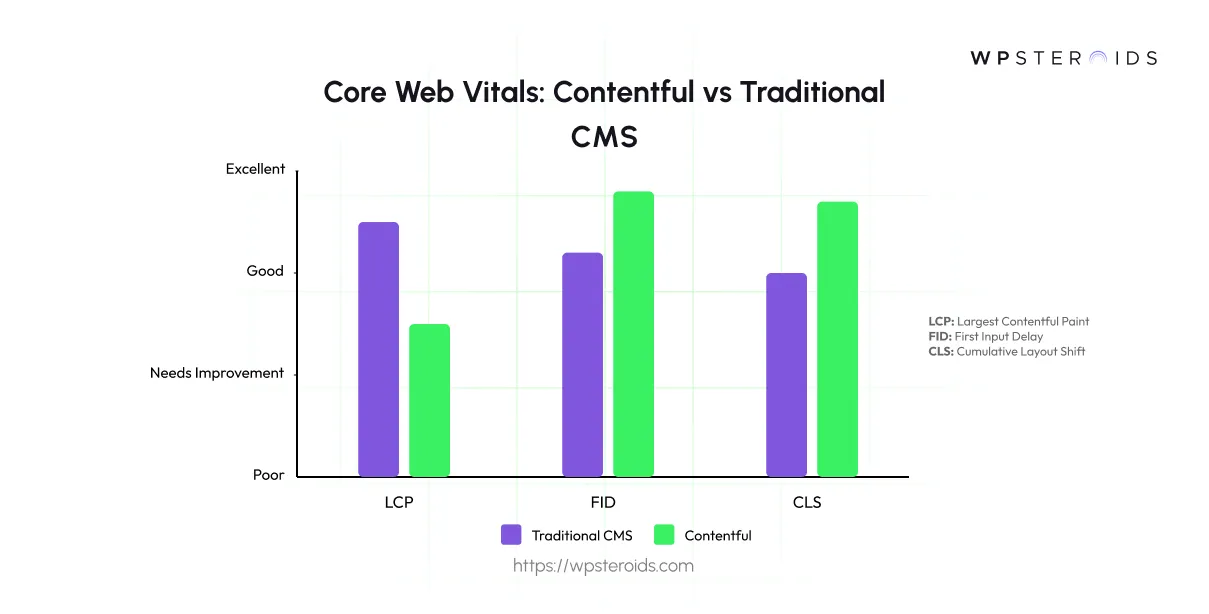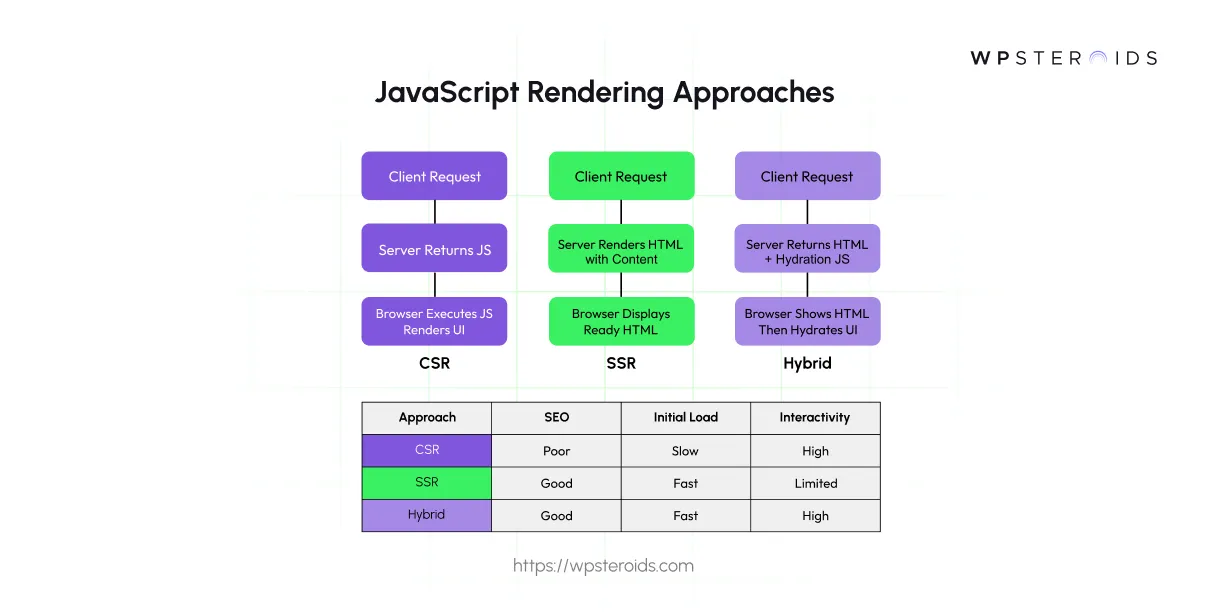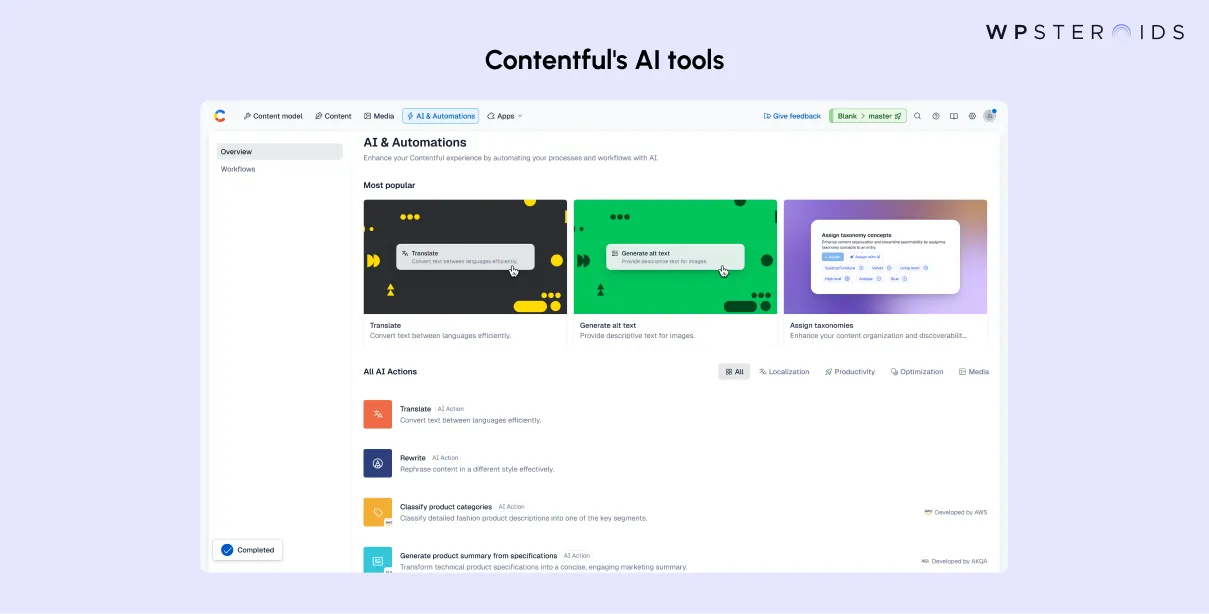
Headless CMS scales and improves WPWhiteBoard’s content distribution, flexibility, and personalization
Anurag Mehta
Whether you’re new to SEO or transitioning from a traditional CMS, understanding Contentful’s unique approach will help you future-proof your strategy and rank higher with less effort.
What is Contentful?
Think of Contentful as a flexible content hub instead of a rigid website builder. It’s a headless CMS, meaning:
Why SEO Matters in a Headless CMS
Traditional CMS Limitations You’ll Avoid:
| Traditional CMS | Contentful's Solution |
| Bloated code slows sites | Lightning-fast APIs deliver only what’s needed |
| Inflexible URL structures | Clean, SEO-friendly slugs (e.g., /blog/seo-tips vs. /page?id=123) |
| Duplicate content risks | Centralized content reused without duplication |

Contentful is built for speed and precision. Here’s how its decoupled design boosts your SEO:
| Strategy | Best for | SEO Impact |
| CSR (Client-Side) | Apps with dynamic content | Risk: Search engines might miss content |
| SSR (Server-Side) | Blogs/static sites | Pro: Instant crawler visibility |
| Hybrid | Most sites | Most sites |

Don’t skip these—they’re your SEO safety net:
Serve the right language/region:
html
<!-- Example for US English & Spanish -->
<link rel="alternate" hreflang="en-us" href="https://yoursite.com/us" />
<link rel="alternate" hreflang="es-es" href="https://yoursite.com/es" />SEO Tools Showdown
| Built-in | Custom |
| Basic metadata fields | Surfer SEO (real-time optimization) |
| Auto alt-text | GA4 (track SEO performance) |
| Schema templates | Screaming Frog (audit trails) |
Common Pitfall Alert: Don’t mix canonical tags and noindex—they conflict!
bash
# Delivers WebP image at 1200px width:
https://images.ctfassets.net/your-asset.jpg?w=1200&fm=webpProper content modeling in Contentful lets you bake SEO best practices into every piece of content you create—saving hours of manual optimization later.
Think of content models as SEO blueprints.
Here’s how to design them:
1. Core SEO Fields for Every Content Type
| Field | Purpose | Best Practices |
| Meta Title | Search result titles | 60-70 chars, include primary keyword |
| Meta Description | Search result snippets | 145-156 chars, add CTA |
| URL Slug | Page address | Hyphens, lowercase, no stop words |
| Canonical URL | Prevent duplicates | Auto-fill unless cross-posting |
2. Example: “Blog Post” Content-Type
1. SEO Fields Section:
2. Content Section:
3. Advanced:
1. JSON-LD Implementation
Blog Post Example:
json
⌄
<script type="application/ld+json">
{
"@context": "https://schema.org",
"@type": "Article",
"headline": "{{entry.fields.metaTitle}}",
"description": "{{entry.fields.metaDescription}}",
"image": "{{entry.fields.featuredImage.url}}?w=1200",
"author": "{{entry.fields.author}}",
"datePublished": "{{entry.sys.createdAt}}"
}
</script>2. Contentful’s AI Automation
3. Common Pitfalls & Fixes
| Mistake | Solution |
| Duplicate slugs | Set “URL Slug” as unique field |
| Missing alt text | Make image descriptions required |
| Schema errors | Use Google’s Rich Results Test tool |
We’ll show you how to do this without second-guessing algorithms.
Think of keywords as street signs for Google. Use them to guide search engines through your content—without being spammy.
1. Strategic Placement
| Location | Example using “Contentful SEO Guide” |
| H1/H2 Headings | H1: The Complete Contentful SEO Guide (2025) H2: Off-Page SEO Optimizations in Contentful SEO |
| First 100 Words | This Contentful SEO guide solves [common pain point]… |
| Meta Title/Description | Title: Contentful SEO Guide: Master CMS Optimization in 7 Steps Description: Dive deep into our Contentful SEO guide. Understand content modeling options, JS rendering, schema markup & XML sitemaps for optimizing your headless website(s). |
| URL Slug | /contentful-seo-guide |
2. LSI Keywords = Natural Flow
Slow images hurt rankings. Here’s how to fix them in Contentful:
1. Alt Text That Works
2. Modern Formats Made Easy
Contentful auto-converts images to next-gen formats:
bash
# Delivers AVIF image at 80% quality:
https://images.ctfassets.net/your-image.jpg?fm=avif&q=803. Lazy Loading
Enable in Contentful’s SDK:
javascript
// Load images only when visible
import { LazyLoad } from 'contentful-ui-extensions';4. Video Optimization
<script type="application/ld+json">
{
"@context": "https://schema.org",
"@type": "VideoObject",
"name": {video title},
"description": {video description},
"thumbnailUrl": {URL of the thumbnail},
"uploadDate": {video upload date},
"duration": {in ISO 8601 format}",
"embedUrl": "embedded video URL directly from video hosting platform(s)"
}
</script>Common Pitfalls & Fixes
| Mistake | Solution |
| Keyword stuffing in the alt text | Describe images for humans first, SEO second |
| Uncompressed hero images | Use ?w=1200&fm=webp parameters |
| Missing video transcripts | Upload.SRT files to Contentful’s media library |
Think of this as an SEO factory – create 100s optimized pages in minutes using Contentful’s composable content.
How It Works:
javascript
// Dynamic title example
`Best ${city} SEO Agency | ${businessName}`Prepare now:
1. Content Structure for “Hey Google”
| Voice Query | Your Content Should |
| “How to [X] in Contentful” | Use H2: “How to [X] in Contentful: Step-by-Step” |
| “Best [topic]” | Add FAQ: “What’s the best way to…?” |
2. Natural Language Tactics

Here’s how to stay safe:
1. Contentful’s AI Safeguards
2. Refresh Strategy
| AI Content | Human Touch |
| First draft | Meta descriptions |
| Meta descriptions | Insert pain point solutions |
| Schema markup | Verify with Google’s tool |
Red Flag Fix: If traffic drops 20%+ post-publish, use Contentful’s version history to revert and retool.
Common Pitfalls & Solutions
| Mistake | Fix |
| 1,000 identical AI product descriptions | Add unique “Customer Story” fields to content models |
| Voice search content is too formal | Record real customer calls for natural phrasing |
| Programmatic pages with thin content | Programmatic pages with thin content Add dynamic “Local Reviews” API feed |
You’ll transform vague “traffic gains” into boardroom-ready reports that show exactly how SEO drives revenue.
Turn Contentful into your SEO command center with these 3 steps:
1. Google Analytics 4 (GA4) Integration
2. Search Console Magic
javascript
⌄
// Contentful webhook example for ranking updates
app.post('/search-console', (req, res) => {
contentfulAppSDK.entries.update(rankingData);
});3. Conversion Tracking
Stop losing credit for SEO wins. Here’s how to connect dots from click to cash:
1. UTM Parameter Strategy
| Parameter | Example | Purpose |
| utm_source | utm_source=contentful_seo | Identify Contentful-driven traffic |
| utm_campaign | utm_campaign=product_launch | Track campaign-specific impact |
| utm_content | utm_content=cta_button_blue | A/B test content elements |
2. CRM Integration
3. ROI Calculation
Monthly SEO Revenue = (Organic conversions × Average deal size) - SEO costs
Example: (50 leads × $1,200) - $3,000 = $57,000 ROI
Common Pitfalls & Fixes
| Mistake | Solution |
| “Dark traffic” untagged | Use Contentful’s Auto-UTM plugin |
| Last-click attribution bias | Enable Data-Driven model in GA4 |
| CRM data silos | Use Contentful’s Zapier integration |
Choosing the right CMS could mean the difference between struggling with SEO limitations and dominating search results.
Let’s break down the facts.
The SEO pros/cons you need to know:
| Metric | Contentful | WordPress | Sitecore | Sanity |
| Avg. Load Time | 1.4s | 3.9s | 2.1s | 2.8s |
| Core Web Vitals Pass Rate | 89% | 42% | 67% | 58% |
| SEO Flexibility | API-first | Plugin-dependent | IT-dependent | Code-heavy |
| SEO Flexibility | 95/100 | 68/100 | 82/100 | 74/100 |
European SaaS Startup (Previously on WordPress)
Challenge:
Contentful Solution:
Their Takeaway: “Contentful lets us focus on content quality instead of fixing broken plugins.”
When to Choose Competitors
Pro Tip: Use Contentful’s Free Migration Assessment to predict SEO gains before switching.
Convinced? Let’s plan your SEO-powered Contentful launch. (Next: Your 30-Day Contentful SEO Roadmap)
Yes, but not in the traditional sense. Instead of a single plugin:
Fix slow-loading elements in 3 steps:
Yes—here’s why:
Better than traditional CMS when:
| Type | Contentful Advantage |
| Technical | API-first speed, auto-sitemaps |
| On-Page | Customizable meta fields |
| Off-Page | Clean URLs for natural backlinks |
| Local | Programmatic location pages |
The #1 choice for:
Think of it as: “WordPress for the API era, built for SEO-first strategies.”
